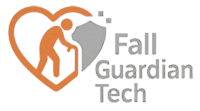When seniors fall, quick yet informed action is critical. In the U.S., falls are the leading cause of injury death for adults aged 65+. Immediate but improper help can worsen injuries like fractures, spinal damage, or internal bleeding. Follow these evidence-based steps to respond safely and effectively:
1. Assess Consciousness & Injuries
(Key first step—never rush to lift!)
- Stay calm and observe: Approach calmly. Do not attempt to move the person immediately.
- Check responsiveness: Gently tap shoulders and ask loudly, “Are you okay? Can you hear me?” Look for eye movement or verbal response.
- Scan for visible injuries: Note bleeding, limb deformities, or seizure activity.
⚠️ 2. Act Based on Their Condition
✅ Case 1: Conscious & Alert
(~60% of falls; prioritize gentle support)
- Ask key questions: “What happened? Do you feel pain in your head/neck/back? Can you move your arms/legs?”
- If no severe pain: Assist them to sit → stand slowly. Use a sturdy chair for support.
- If pain or dizziness persists: Keep them seated/warm and call 911.
⚠️ Case 2: Fell Due to Medical Issue
(e.g., stroke, heart attack, fainting)
- Check for stroke signs: Sudden headache, slurred speech, uneven face, or limb weakness? Do not move them. Call 911 immediately.
- If they carry medication (e.g., nitroglycerin for heart pain): Help them take it while waiting for EMS.
Case 3: Unconscious but Breathing
(Risk: Choking or spinal injury)
- Call 911 first.
- Gently roll them onto their side (recovery position) to keep airways clear. Support head/neck during movement.
- Cover with a blanket to prevent shock. Monitor breathing until help arrives.
Case 4: No Pulse or Breathing
(Requires immediate CPR)
- Shout for help. Call 911 and start CPR.
- Perform chest compressions:
- Position: Heel of one hand on breastbone (between nipples).
- Action: Press down 2–2.4 inches at 100–120 beats/min. Allow full chest recoil.
- Ratio: 30 compressions → 2 rescue breaths. Repeat until EMS takes over.
⚠️ Critical Reminder: U.S. Good Samaritan laws protect responders acting in good faith during emergencies.
What NEVER to Do
- ❌ Don’t lift abruptly—may worsen fractures/spinal injuries.
- ❌ Don’t offer food/drink—choking risk if unconscious.
- ❌ Don’t ignore “minor” falls—even seemingly mild falls can cause internal bleeding or delayed trauma.
Aftercare & Prevention Tips
- Medical follow-up: All falls warrant a doctor visit to check for hidden injuries (e.g., hip fractures).
- Prevent future falls:
- Install grab bars, non-slip mats, and bright lighting at home.
- Encourage balance exercises (e.g., Tai Chi) and vitamin D supplements.
Quick Reference Icons:
Assess → Talk → Treat → Call 911 (if unconscious/bleeding/seizing)
Verified by U.S. EMS guidelines. Share this to save a life! ♥️
